I've finally found a low-maintenance cast iron casserole dish - and it's a quarter of the price of most others
I'm lifting the lid on Le Creuset's affordable rival
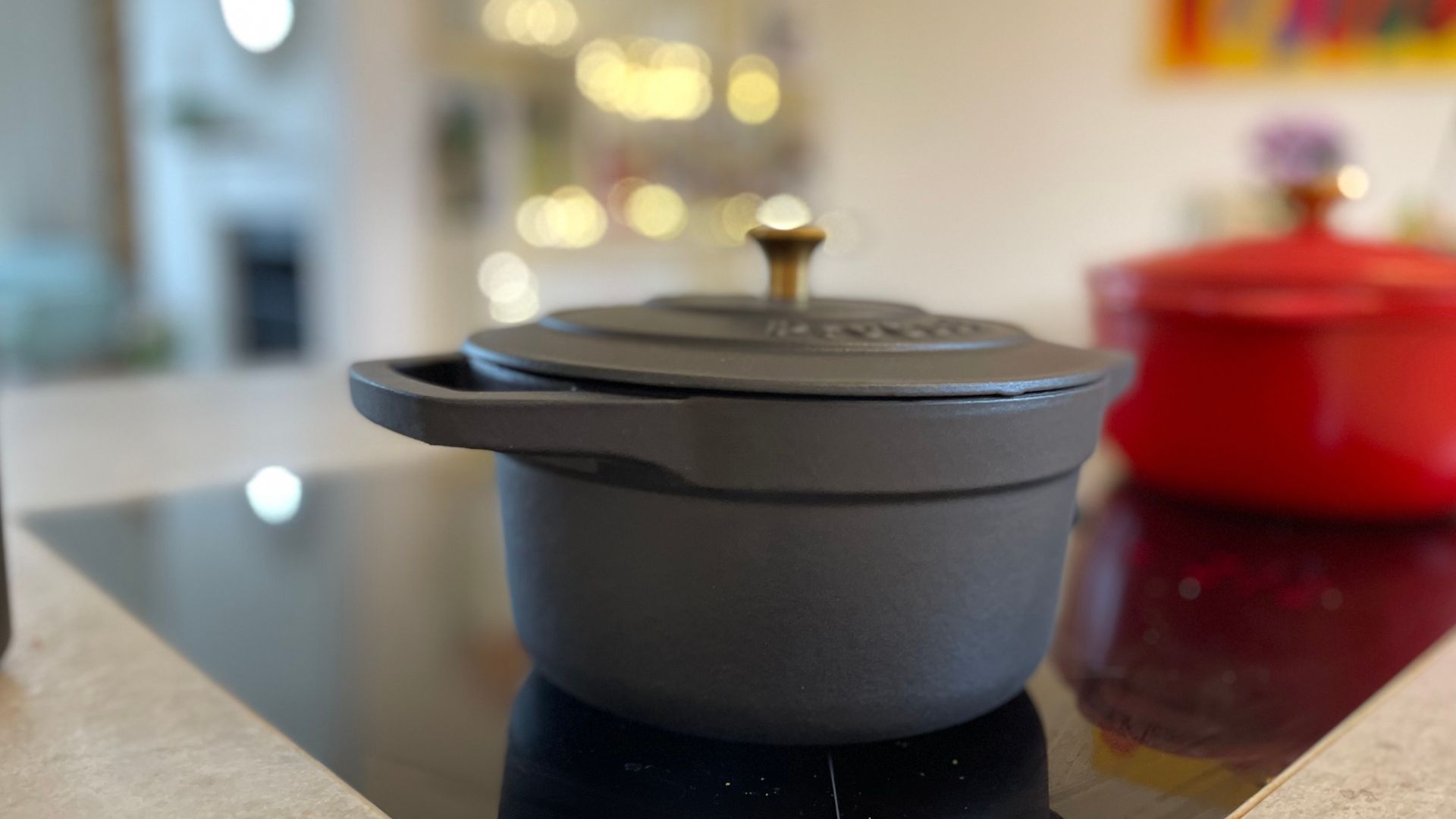
If you like the idea of premium cast iron, but not the price tag, this is the sweet spot. ProCook's casserole performed like models twice the price when it came to speed and even heat distribution, but it takes a little extra maintenance.
-
+
Looks and feels premium (without the hefty price tag)
-
+
Compatible with all hobs and oven safe up to 260C
-
+
Robust, low-maintenance lining
-
+
Warms up quickly and evenly
-
+
Generous 25-year guarantee
-
-
Base isn't fully non-stick
-
-
Not dishwasher safe
Why you can trust Woman & Home

If you’ve been in a debate about whether to invest in ProCook Cast Iron Casserole Dishes or Le Creuset, you’re in the right place. I’ve been a lifelong user of Le Creuset, but I've recently been giving some more budget options a go.
ProCook's cast iron casserole dish comes in a range of classic colours: you can opt for rich reds, mossy greens, and matte blacks. They look and feel every part the hearty stewpot-come-heirloom that I dream of and the price tag is pretty dreamy too.
So, if you've ever found yourself asking 'is Le Creuset worth it?' I’ve tested this cheaper alternative out on a whole host of different cooking and baking tasks in my home, so you can make the decision for yourself. Here’s everything you need to know.
Specifications
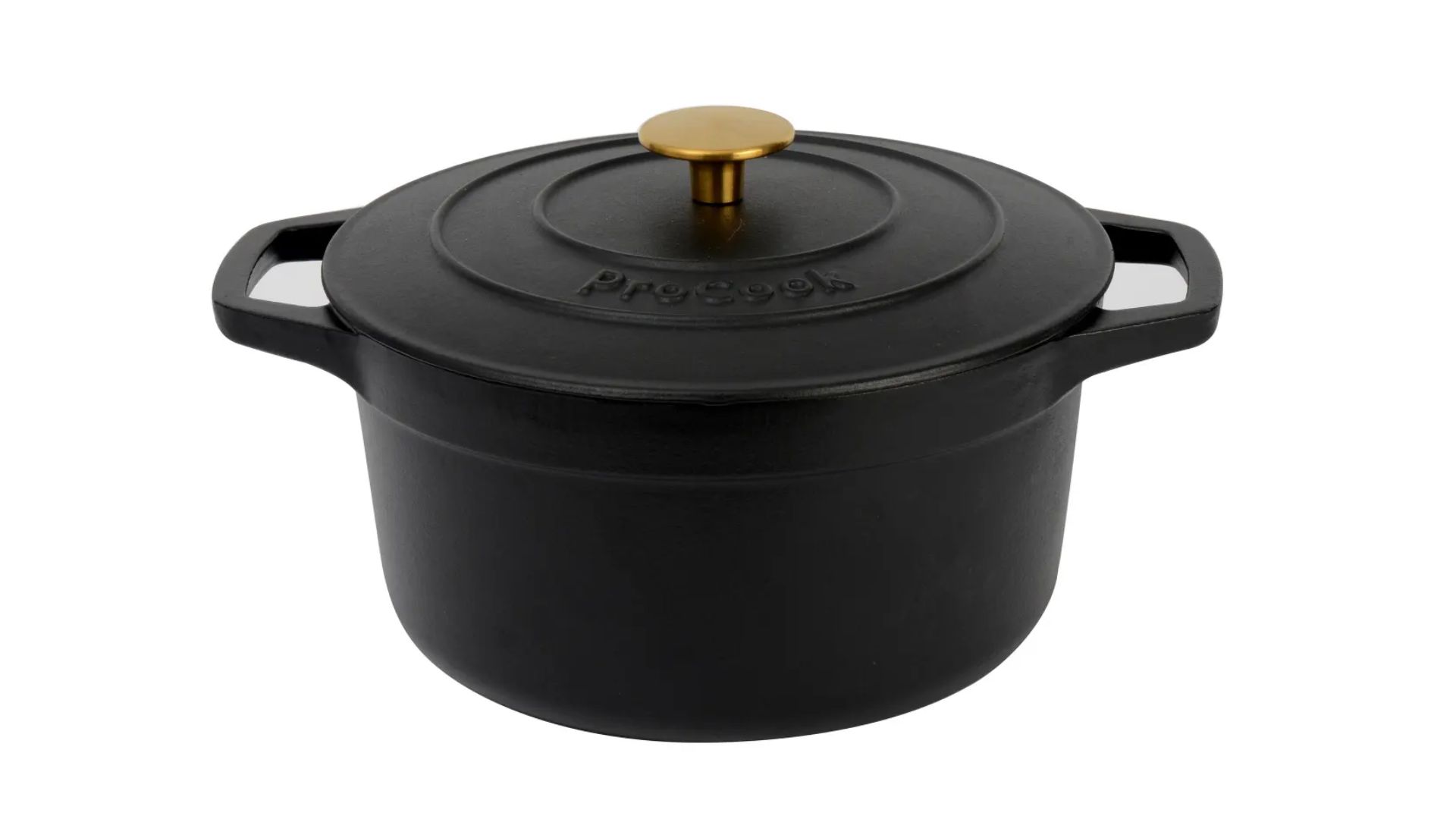
| Dimensions | 24cm diameter x 12 cm height |
| Weight | 5.1 kgs |
| Composition | Cast iron and stainless steel |
| Capacity | 4.7L |
| Oven safe | Yes, up to 260°C |
| Dishwasher safe | Not recommended |
| Compatible with | All hobs |
| Guarantee | 25-years |
| Colours | Black, grey, white, blue, green, red |
Who would it suit?
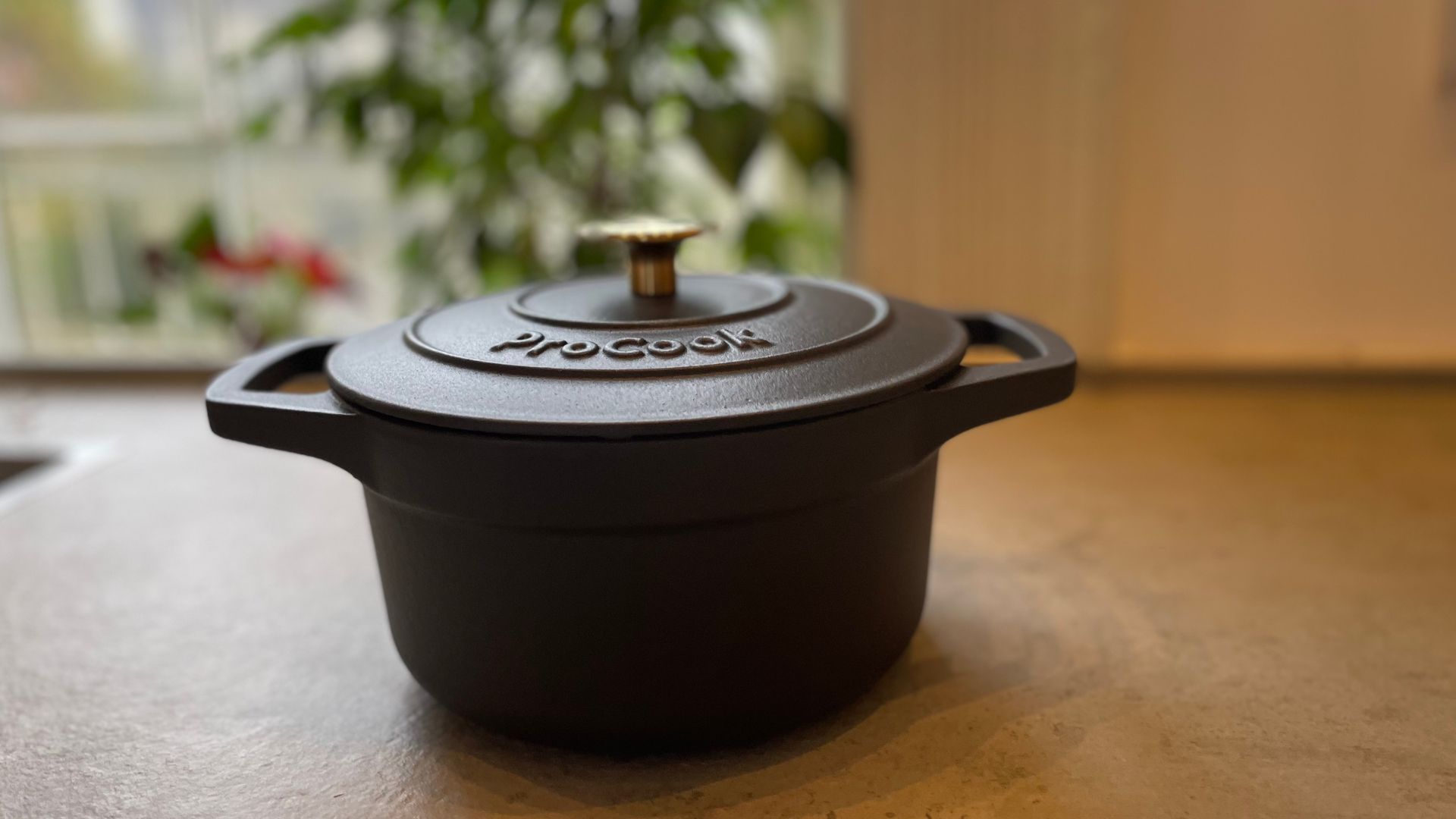
Naturally, ProCook comes with a budget appeal. It’s a quarter of the price of Le Creuset on a good day, which is a great saving to make if you keep a close eye on your spending.
What’s nice about ProCook is that you aren’t compromising on quality in any notable sense. As I mentioned earlier, I’ve been cooking in Le Creuset for a long time and when I switched over to ProCook, I really couldn’t tell the difference. Of course, your choice of colours is more limited and the darker lining isn’t for everyone, but it’s good to know nonetheless.
I think the most notable difference, especially if you’re a beginner to cast iron cooking, is that ProCook doesn’t use a non-stick enamel lining in these pots, which means that you’ll need to keep a closer eye on the heat and oil that you’re using in your food. This does make cooking more fiddly, but the cleanup is easier, because you won't need to worry about scratching or damaging any non-stick.
So, whether you're on a budget or you're a beginner, you're pretty safe in ProCook's hands.
Sign up to our free daily email for the latest royal and entertainment news, interesting opinion, expert advice on styling and beauty trends, and no-nonsense guides to the health and wellness questions you want answered.
Unboxing
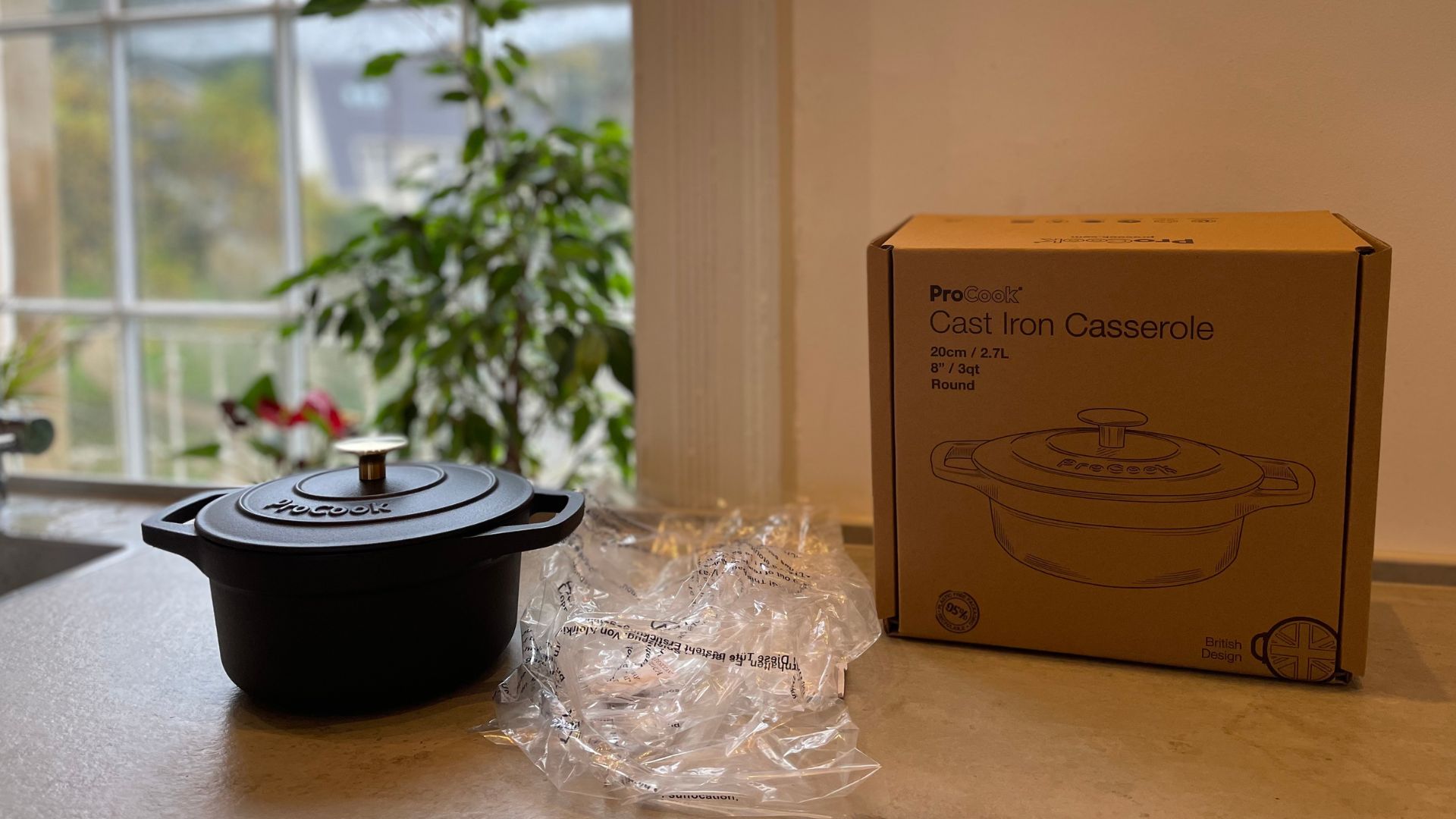
ProCook sends their weighty cast iron casserole in a neat, recyclable box. There isn’t any frills or fuss. In fact, the only thing to note is that you’ll have a little soft plastic to dispose of. These days, most large supermarkets will be able to recycle this for you, so it’s always worth holding on to.
On the counter, the ProCook Casserole looks good. I opted for their black colourway, but you could choose red, green, and blue. All of these shades are very classic, so they’ll look good anywhere. The black is lined in the same colour, which is actually much easier to maintain than pots with pale enamel. Any scratches or damages (if there were any) were invisible. I’ve had a look at the reviews and this is, in fact, one of the reasons that ProCook’s cast iron is so popular.
What is it like to use?
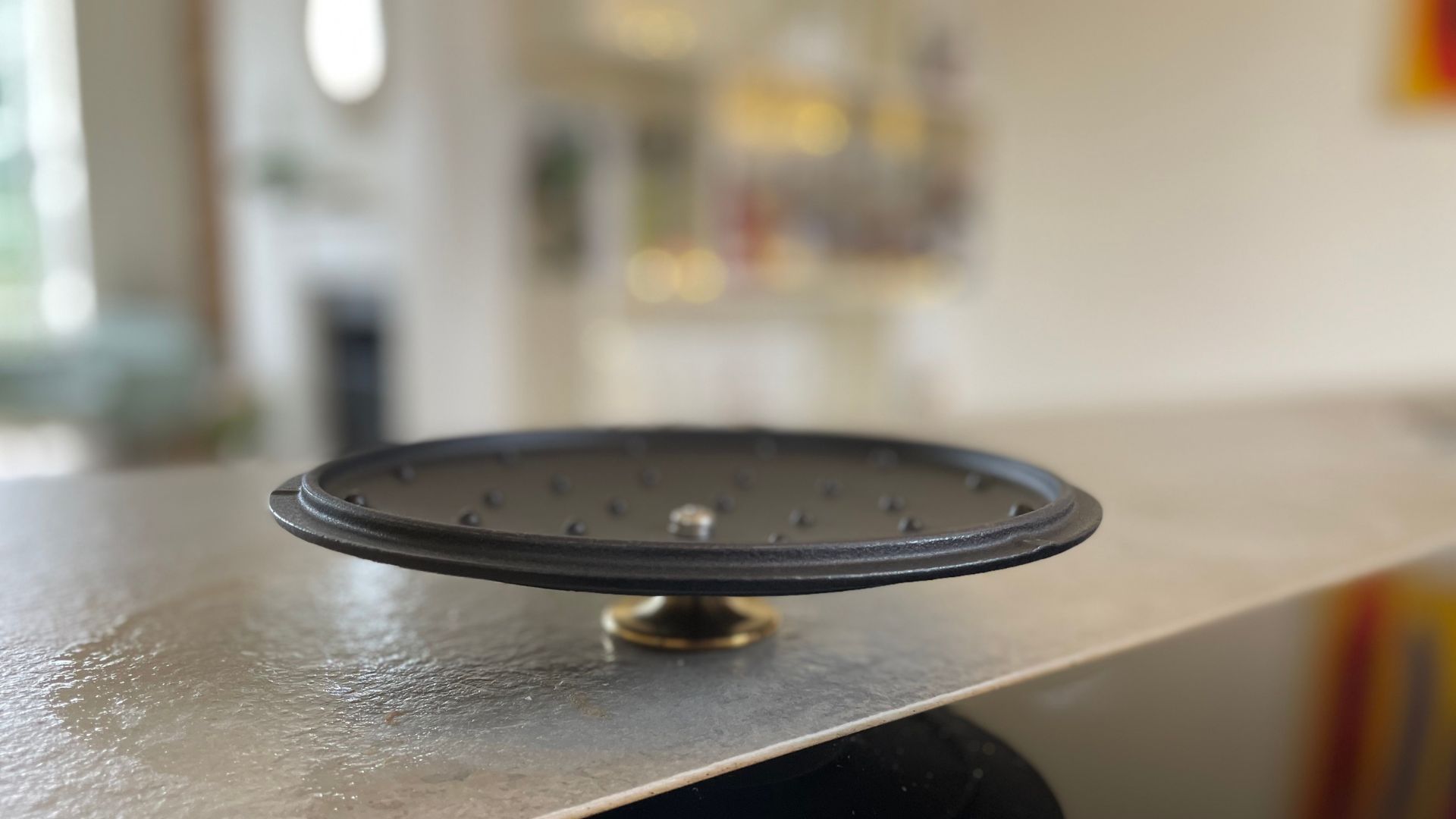
As with any cast iron, this is hefty. Luckily, even though it has a considerable 4.7-litre capacity, it’s relatively small, so not too aggressive on your wrists. When I had mine full of boiling water and potatoes, it wasn’t comfortable, but for the most part, it was nice to use.
Test 1: making soup
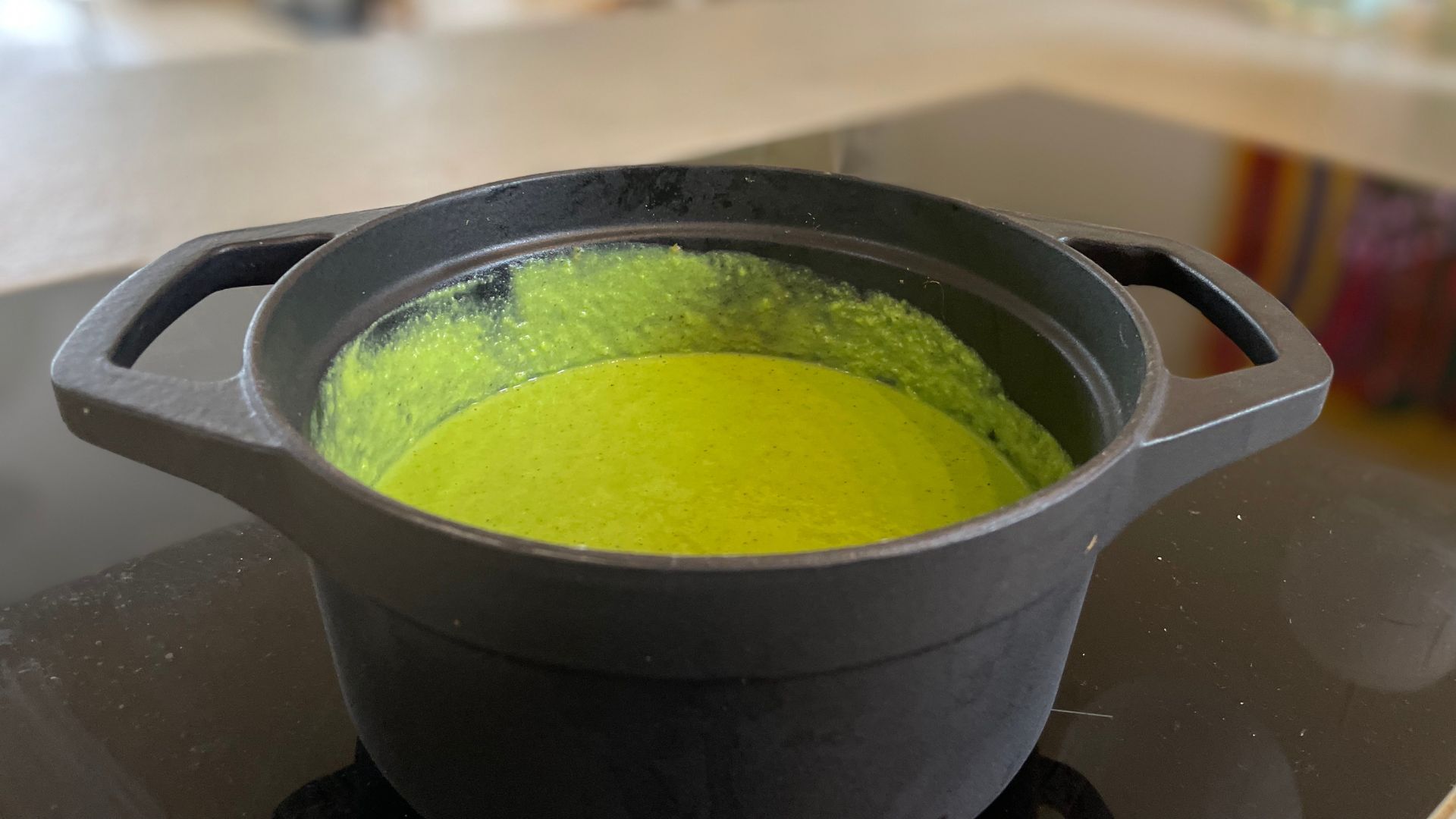
Soup is a great test of multiple different functions on a casserole: you have to boil water, fry onion and garlic, and then blend. I started out by adding 3 litres of water into the casserole pot. I put the heat on full, stuck the lid on, and my water was boiling in eight minutes. That might sound like a long time in comparison to stainless steel pans, because it is, but for a cast iron pot, that’s pretty speedy.
Once that part was done, I added peas to the pot, popped the lid back on and let them boil for another five minutes. By this point, the peas were well boiled, but the handles on each side of the pan were hot, as was the lid, so I needed to be very careful to only hold the knob on the top of the lid. This wasn’t tricky, except for when I wanted to rest the lid on the knob, because then I had to practice some arm gymnastics to get it balanced and stable.
After the peas, I poured some oil into the bottom of the ProCook and cooked some garlic and onion. These sizzled, browned, and softened neatly. It's a little harder to get a good look at what's going on when the lining is black, but after five minutes (and lots of lifting a spoon of onion out of the pan), I decided they were ready for the rest of the soup. I added vegetable stock, peas, and mint leaves.
After boiling these together for a while, I pulled out my hand mixer and gave the mix a whizz. I normally don’t like doing this on cast iron pans, because I worry about damaging the enamel. However, in this case, without any enamel, I could be a bit more relaxed with where my blender went in the pot.
The final result, my pea and mint soup, was great. I could taste that everything was well-cooked and really smooth. Overall, it’s a great start.
Test 2: stewing

Casserole is quite literally in the name of the ProCook, so I could resist running a test on it. First, I sautéed some garlic and onion. After that, I added chopped parsnip, potato, carrot, and beetroot to the pot with some wine, tomato paste and spices.
I popped the lid on and let it simmer for twenty minutes on a low heat. When I lifted the lid, it had captured a lot of condensation and the vegetables were almost soft enough to be ready. I gave the bottom a little stir and it felt like the casserole was beginning to catch, which isn’t much of a surprise. This is really something to watch out for when you don’t have a non-stick to hand.
After another ten minutes, the casserole was perfect. My vegetables were soft and tender and the sauce had thickened up nicely. I would trust this with all my casserole concoctions, but throw in a recommendation to keep an eye on the bottom — otherwise, it might catch.
Test 3: oven roasting
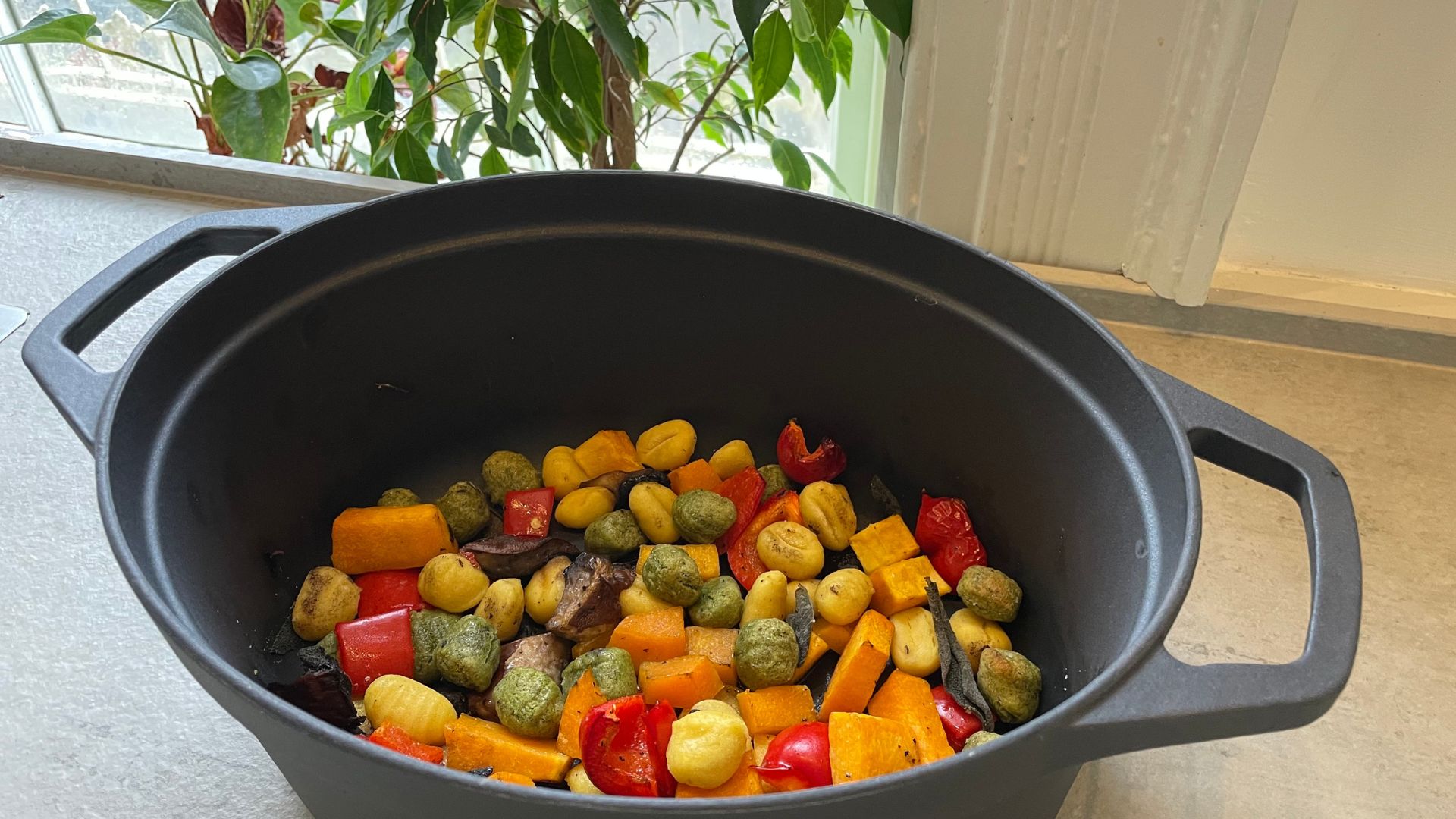
Using your casserole in an oven can open up a whole new world of opportunity, if i't's oven safe. Luckily, this is up to 260°C, which is more than most recipes will ever call for.
The first roast that I did in this was my signature baked gnocchi. It is a really simple recipe of chopped butternut squash, shredded mushroom, gnocchi, sage, and garlic. I toss it all in oil and then line the bottom of the casserole with it. These all roasted at 180°C for thirty minutes and I was pleased with how everything looked. My gnocchi was puffed up and crispy, the vegetables had browned and softened, and it smelled delicious.
The only drawback was that, without an enamelled or non-stick base, all my little gnocchi pillows had stuck to the bottom. I scraped up what I could, but that doesn’t help the fact that I lost the bottom layer of a lot of gnocchi. Note to self: line this or use a lot of oil to stop it from sticking.
Test 4: baking bread
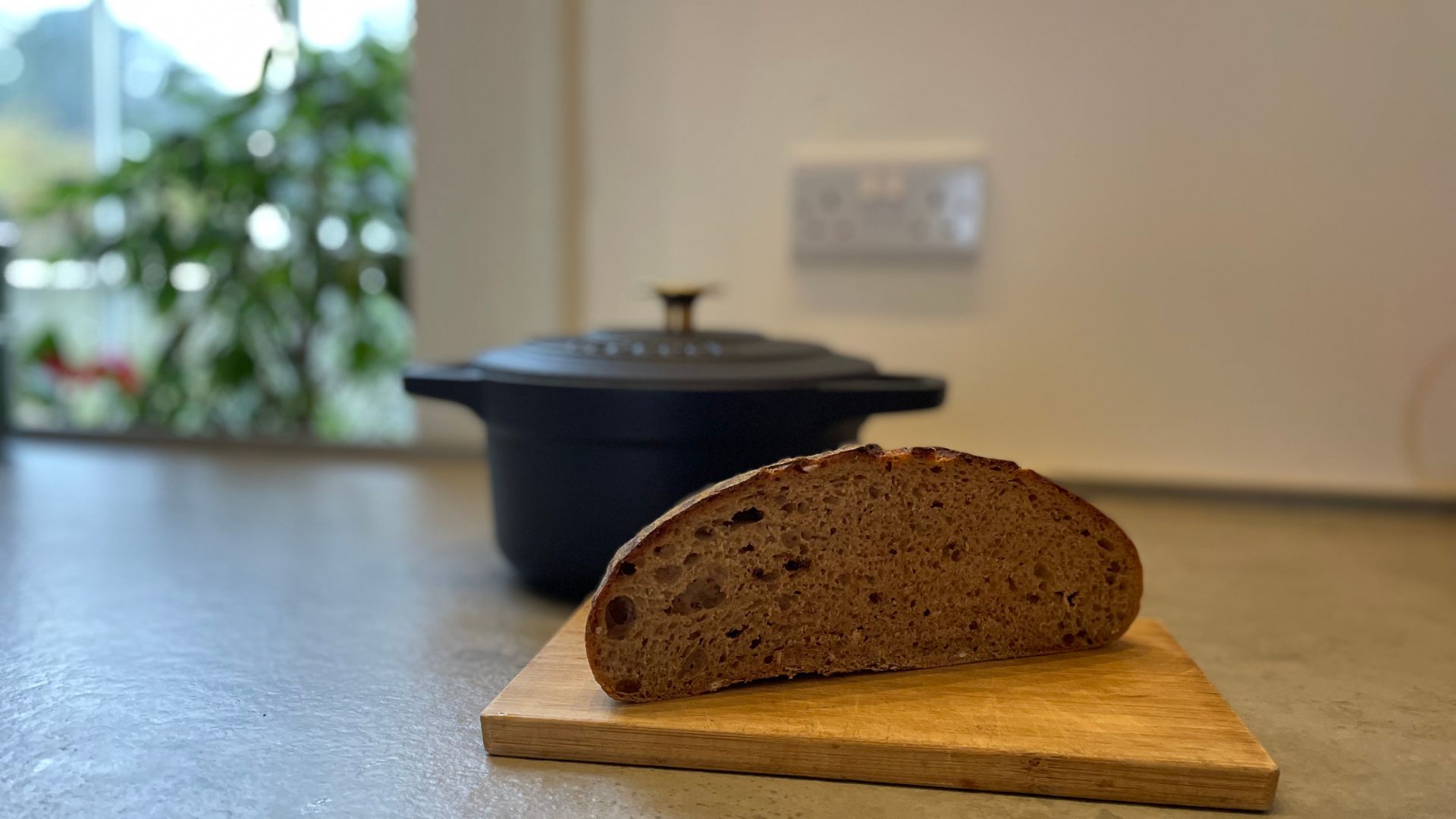
The fourth and final baking test that I did was with a loaf of bread. This required a bit more technical skill from the ProCook. I need really even, really stable heat transfer the whole time.
Before I did anything with my dough, I put the ProCook in the oven at 230°C. Then, after about ten minutes, I carefully lifted it out and put my bread inside. Given the gnocchi incident, I was prepared that the bread might stick, so I used a special bread sling that lifts out of the base of the pan. This is essential.
I popped the sling and bread into the ProCook Casserole Dish, with the lid on, and cooked it for twenty minutes. Then, I took the lid off and gave the bread a final burst for ten minutes. It came out looking beautiful. The loaf had the perfect shape, a nice rise, and it had crisped up beautifully on top. It’s a great replacement for a bread oven.
Cleaning
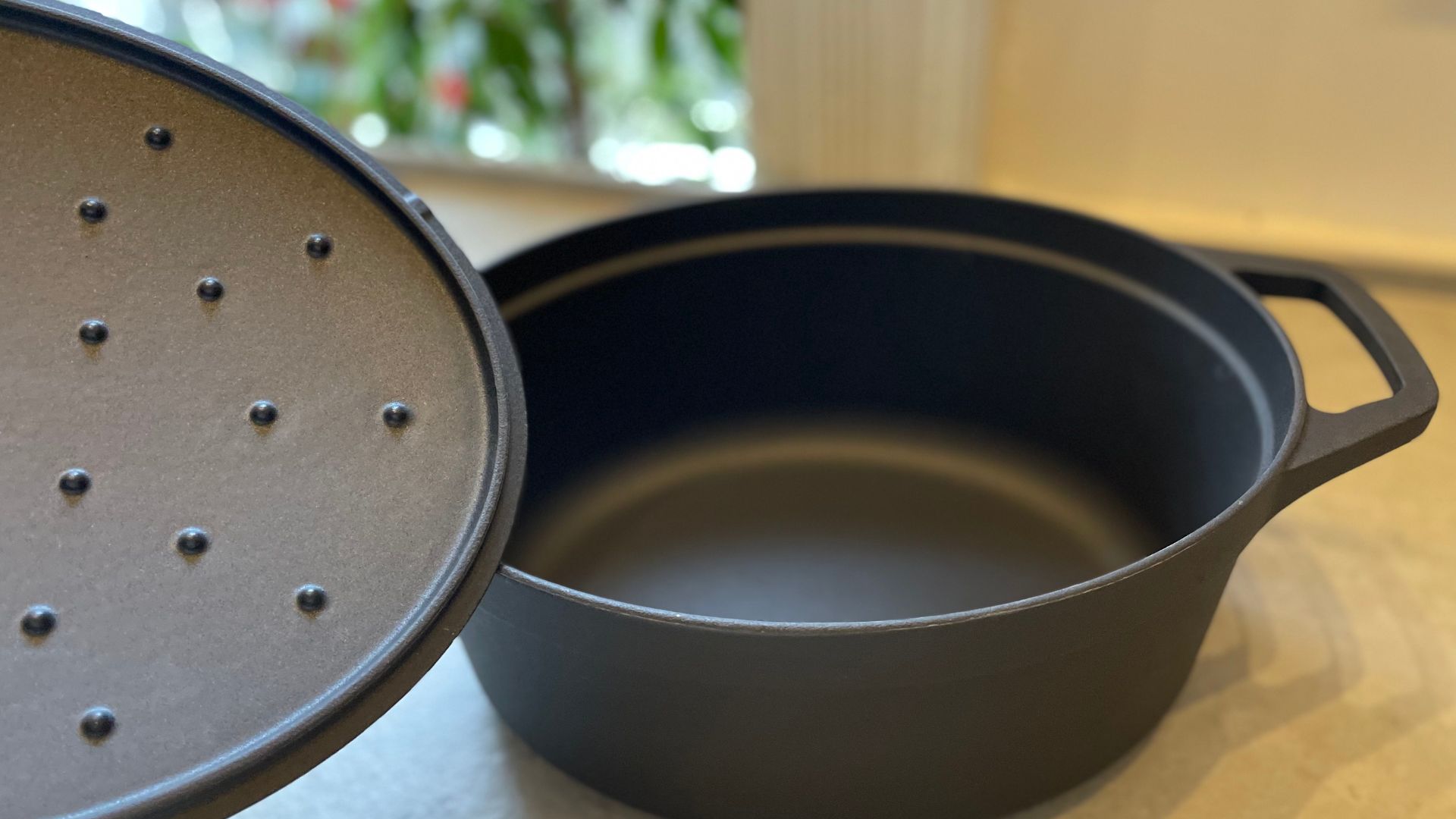
ProCook doesn't recommend that you put this in the dishwasher, so I would do as they say. Luckily, it's really easy to clean. I used warm, soapy water and a sponge, but I didn't need to scrub at much, because this did a good job of keeping burning to a minimum.
On the occasions that I have burned things to the base of the ProCook, it's been really simple to clean up. I soaked it to soften any burnt food and then used a more abrasive sponge or wire wool. You can't do this with many cast iron pots because they're often lined with a more fragile non-stick. Not this one though - it can take tough stuff and still look almost pristine. If you want more advice, you can visit our page on how to clean cast iron.
How does it compare?
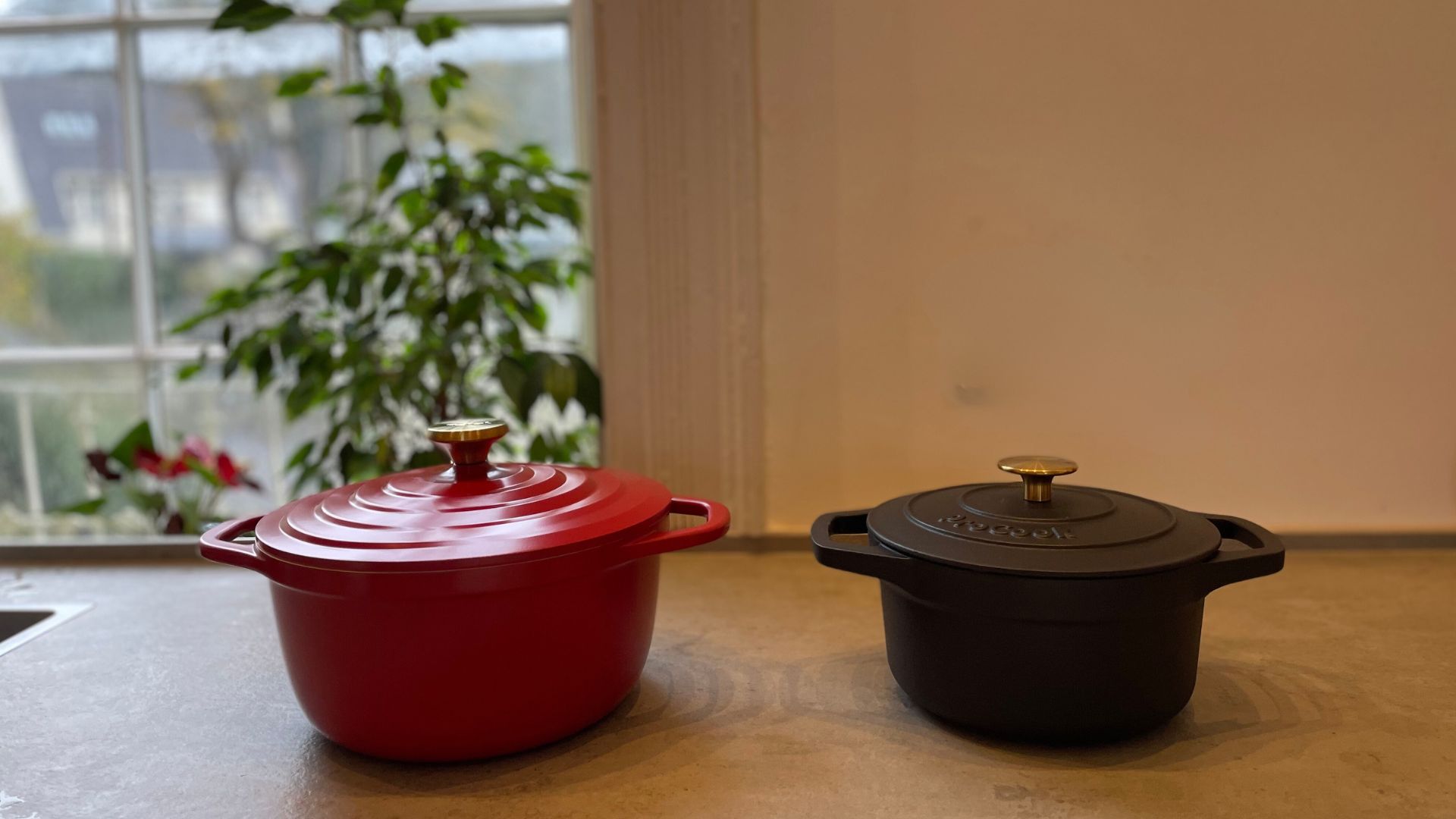
As cast iron casserole dishes go, ProCook's is one of my favourites. I love the traditional silhouette and classic colours. The handles are wide and easy to grip (even with oven mitts) and the lid locks in a lot of the moisture. The comparison that I'm always asked about is, of course, what this is like in the context of Le Creuset.
I have owned my Round Le Creuset Casserole for nothing short of nine years. It's brilliant, but RRP starts at £206 compared to ProCook's modest £75. The Le Creuset is extremely versatile, covered by a lifetime warranty, and brilliant at delivering consistent, even temperatures. Performance-wise, it's faultless and thus, also, unbeatable. However, it is lined with enamel, which means that you have to be very careful not to use metal utensils on it and you'll only be able to clean it very gently. The ProCook's lining is much more forgiving, whilst delivering competitive results. The Le Creuset boiled water 43 seconds faster and I'd be tempted to say that the lid locks in a little more moisture, but that's it. You could save at least £125 and still have a premium-feeling casserole dish. It's tempting.
You might also be wondering about the Tefal Air in the image above. It looks good and the price point is comparable to ProCook's. What it's important to know is that the ProCook is cast iron and Tefal's is cast aluminium, which means that it's three times lighter. The ProCook has the edge on durability, slow cooking, and oven dishes, but for all your hob work, the Tefal is just as good. If you know you've got sensitive wrists, or you want a lighter option, I'd recommend the Tefal.
Should you buy it?
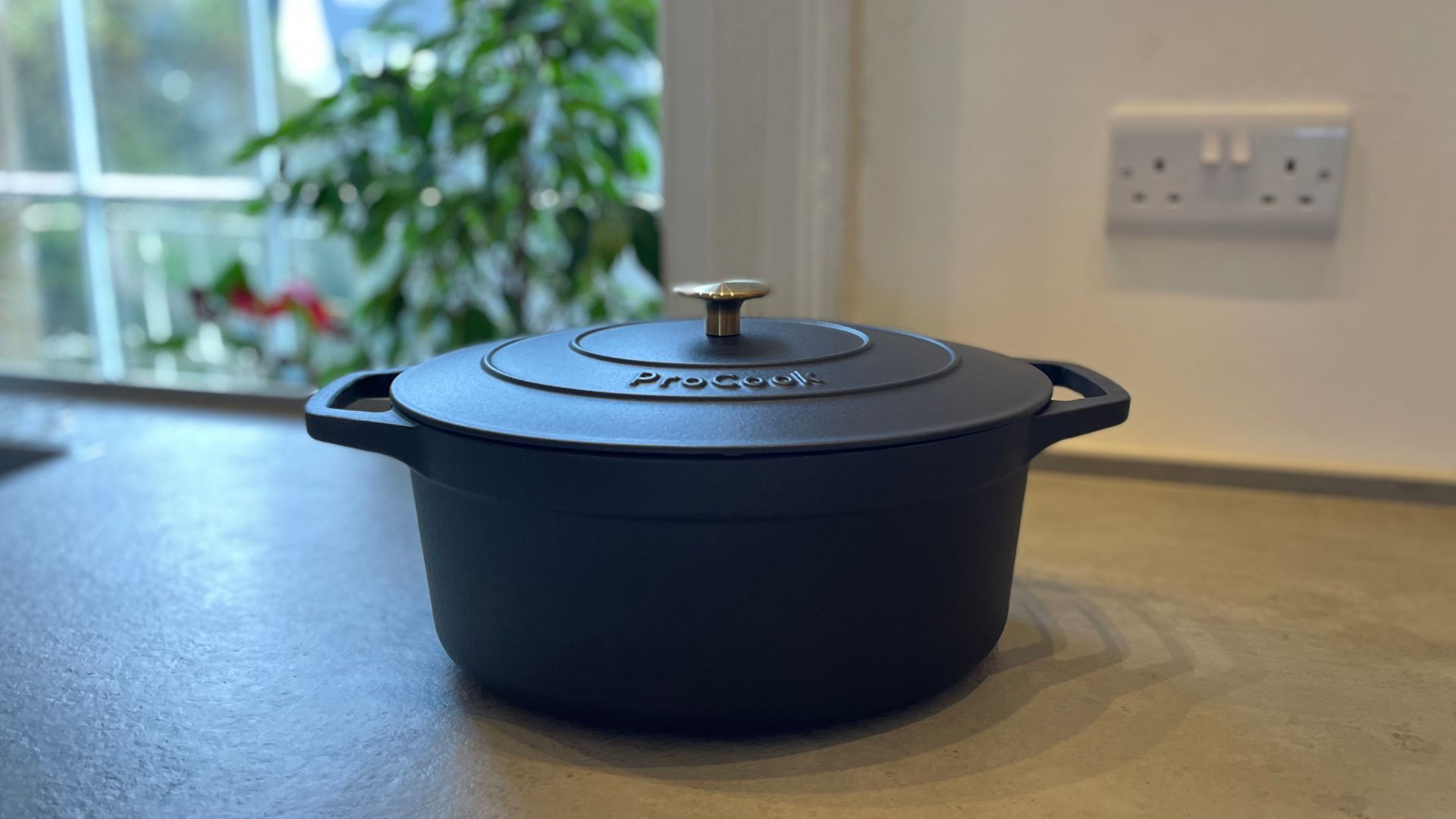
If you want to shop the luxury experience, but you're also on a budget, ProCook's Cast Iron Casserole Dish is perfect. It has all the thoughtful touches (deep handles, a flat lid handle, and moisture-locking in the lid) that you'd expect from casserole dishes that cost two or three times the price.

Laura is woman&home's eCommerce editor, in charge of testing, reviewing and creating buying guides for the Homes section, so you'll usually see her testing everything from the best dehumidifiers to sizing up the latest Le Cruset pot. Previously, she was eCommerce editor at Homes & Gardens magazine, where she specialised in covering coffee and product content, looking for pieces tailored for timelessness. The secret to her heart is both simplicity and quality. She is also a qualified Master Perfumer and holds an English degree from Oxford University. Her first editorial job was as Fashion writer for The White Company.